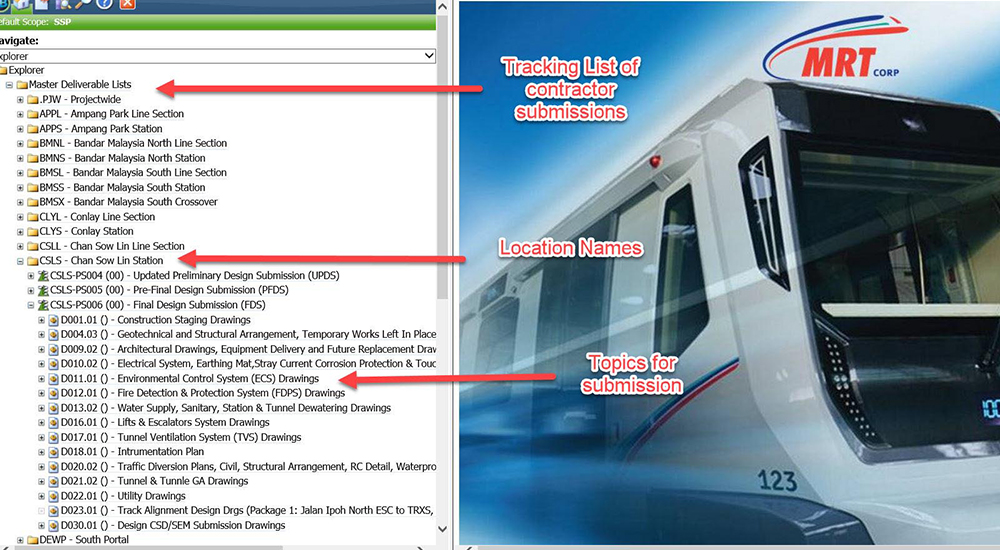Bentley Systems applications help Malaysia’s MRT optimise workflows on SSP Line

Mass Rapid Transit Corporation, MRT, developer of Malaysia’s largest transit project, successfully opened its Sungai Buloh-Kajang, SBK, Line in the Greater Klang Valley Region of Kuala Lumpur in 2017. Keen to leverage the wealth of experience that MRT gained on that project, the team focused its efforts on improving time and cost certainty through the adoption of multidiscipline BIM workflows on the Sungai Buloh-Serdang-Putrajaya, SSP, Line, its second of three lines.
Moreover, having identified a number of challenges in construction management and handover of digital as-built information to operations, MRT decided to advance its BIM workflows through the adoption of digital twins using Bentley solutions. By going digital, MRT can create and visualise its digital assets, as well as check their status, perform analyses, and leverage insight gained to predict and optimise the organisation’s performance.
By going digital, MRT can create and visualise its digital assets, check their status, perform analyses, and leverage insight to optimise the organisation’s performance
MRT’s Asset Information Management, AIM, system maintains a list of documents, asset tags, and equipment, along with the maintenance class and frequency, manufacturer’s name, and contact details. To manage its data, MRT created a custom classification system, the KVMRT Classification System, using AssetWise in its cloud-based connected data environment, CDE. By establishing a Master Asset Register, MAR, the system can be used to capture all the pertinent information related to assets and equipment, which will be used by the operations and maintenance teams throughout the operational life of the railway.
The quality of data is greatly improved through its validation against MRT’s standards to identify inaccurate, incomplete, or duplicate data and prevent it from entering the system. The project team uses the system to drill down through the asset hierarchy and find an asset in the register when the asset name or number is not known. The system makes it easier for teams to interact with asset information and get responses to the queries about a system or subsystem.
The quality of data is greatly improved through its validation against MRT’s standards to identify inaccurate, incomplete, or duplicate data and prevent it from entering the system
Asset data contributed to the digital twin during design, procurement, and commissioning remains available at every phase of the lifecycle, thereby easing discovery and access to information. Maintaining comprehensive information on the assets throughout project delivery minimises the amount of human interaction needed during asset handover to operations.
Adopting this approach using Bentley applications is enabling MRT to achieve compliance with the United Kingdom government’s Level 2 BIM maturity, a standard mandated for this project. Using iModels, the team at MRT can visualise and locate an asset in the 3D model and gain a better understanding of connected or related assets and equipment. Moreover, increased insight gained through this approach is enabling the team to improve decisions that will ultimately contribute to a reduction in the whole life cost of the railway.
“Going digital with Bentley, including our use of a digital twins approach, is helping MRT to implement the business processes and systems it needs to spearhead the digital future of construction in Malaysia,” said Aswadi Yusof, BIM Champion with MRT





